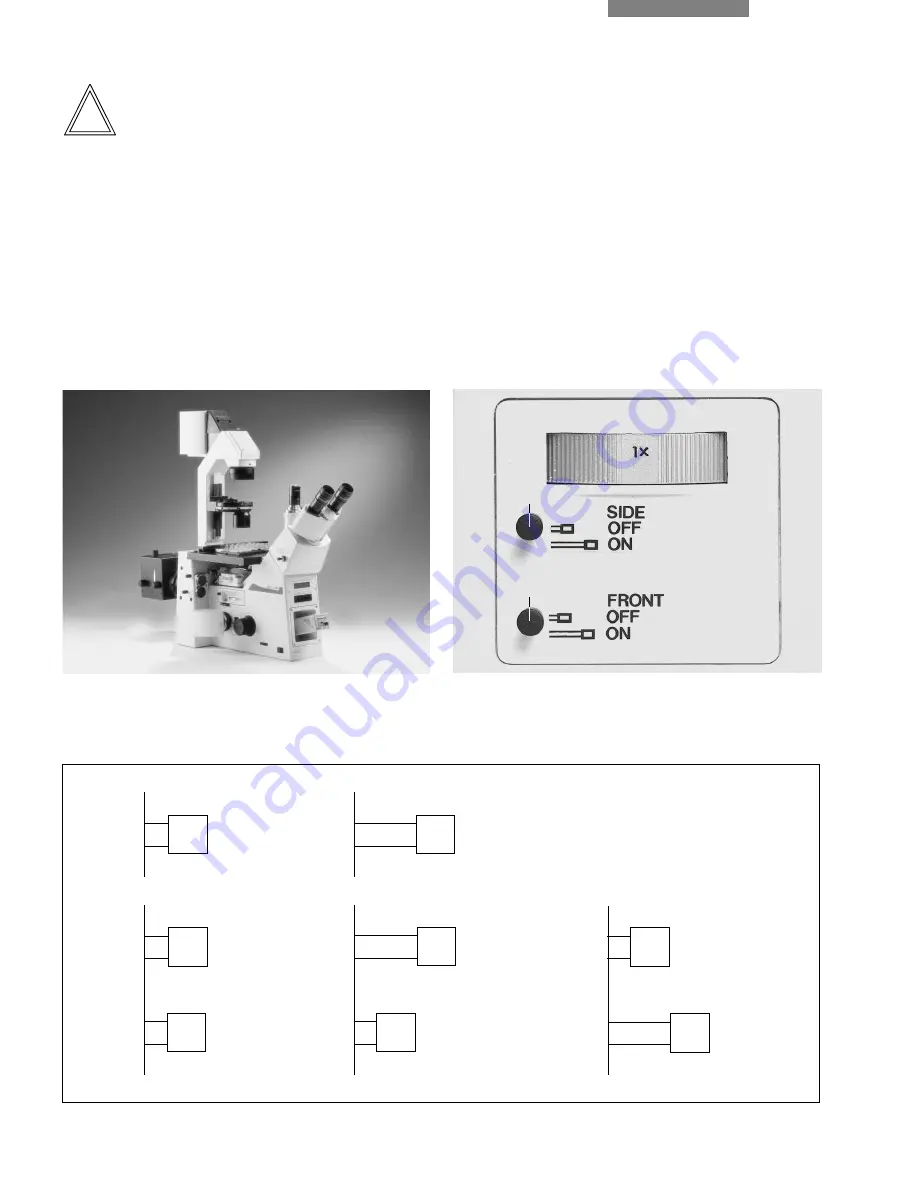
96
n. b.:
Long-term video microscopy
The solid and therefore stable basic body of the
stand takes a while to stabilise thermally after
the microscope is switched on. For investiga-
tions taking over > 30 min. therefore, the
microscope should be switched on about
1␣ – 2 hours beforehand.
Fig.␣ 80␣ ␣
Leica DM IRB, equipped with three TV cameras
Fig.␣ 81␣ ␣
Switch rods for beamsplitting
1
Upper beamsplitter switch rod (SIDE),
2
Lower beamsplitter
switch rod (FRONT)
Fig.␣ 82␣ ␣
Beamsplitting
1
100 % light to the tube,
2
80 % light to the side photo port, 20 % to the tube,
3
100 % light to the tube,
4
80 % light to the side
photo port, 20 % to the tube,
5
50 % light to the front port, 50 % to the tube
1
2
3
4
5
SIDE
OFF
SIDE
OFF
FRONT
OFF
SIDE
ON
SIDE
ON
FRONT
OFF
SIDE
OFF
FRONT
ON
1
2






























